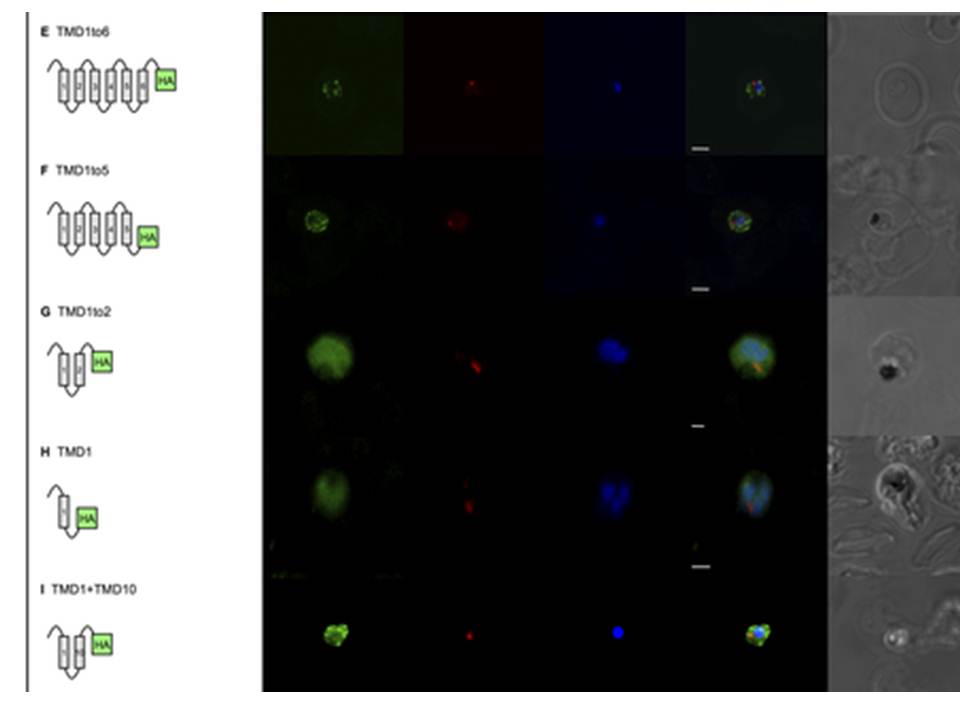Gene expression constructs not targeted to the apicoplast now co-localised with the plasma membrane. Removal of TMDs 7, 8, 9 and 10 (TMD1to6), which completely abrogates targeting to the apicoplast (Fig 2E), results in localisation of the protein that mostly overlaps with the parasite plasma membrane marker, PfNT1. Note that the erythrocyte is infected with three separate parasites. E. Removal of TMDs 6, 7, 8, 9 and 10 (TMD1to5), which completely abrogates targeting to the apicoplast (Fig 2F), results in localisation of the protein that mostly overlaps with the parasite plasma membrane marker, PfNT1. Note that the erythrocyte is infected with two separate parasites. F. Removal of TMDs 3, 4, 5, 6, 7, 8, 9 and 10 (TMD1to2), which completely abrogates targeting to the apicoplast (Fig 2G), results in some re-localisation of the protein to the plasma membrane. G. Removal of TMDs 2, 3, 4, 5, 6, 7, 8, 9 and 10 (TMD1), which completely abrogates targeting to the apicoplast (Fig 2H), results in some localisation of the protein to the plasma membrane. H. Recombining TMD1 with TMD10 (TMD1+10) was unable to reconstitute apicoplast targeting (Fig 2I) and resulted in some plasma membrane targeting.
Lim L, Sayers CP, Goodman CD, McFadden GI. Targeting of a Transporter to the Outer Apicoplast Membrane in the Human Malaria Parasite Plasmodium falciparum. PLoS One. 2016 11(7):e0159603.
Other associated proteins
| PFID | Formal Annotation |
|---|---|
| PF3D7_1347200 | nucleoside transporter 1, NT1 |
